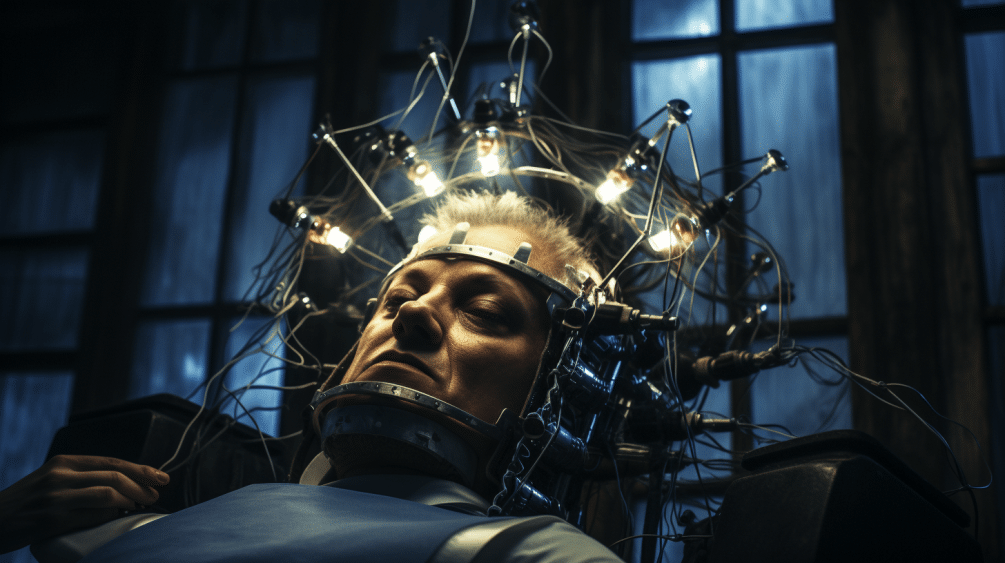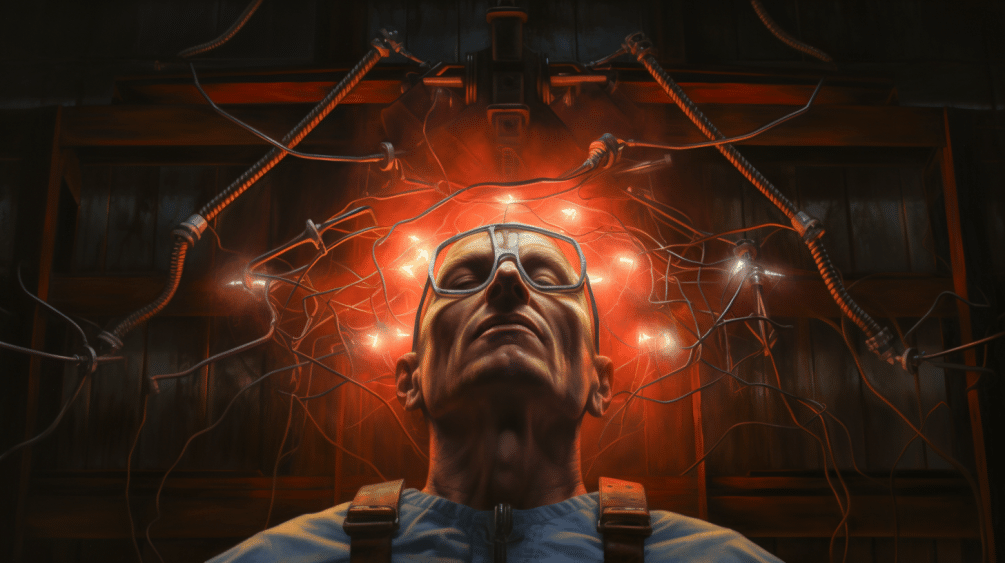A new study tracked changes in brain volume in depressed patients after electroconvulsive therapy (ECT or “electroshock therapy”).
The study found that ECT led to increases in gray matter (brain tissue), which then decreased substantially over the next 2 years.
The initial increases did not relate to improvement in depression symptoms. However, greater decreases 2 years later related to worse long-term outcomes.
Key Facts:
- 17 patients with severe depression underwent ECT treatment while hospitalized. Their brains were scanned before ECT, after ECT, and 2 years later.
- 33 non-ECT depressed patients and 21 healthy people were scanned at similar intervals for comparison.
- ECT patients showed increases in gray matter after treatment in areas like the hippocampus. This returned to normal within 2 years.
- Non-ECT patients and healthy controls did not show these ups and downs. The changes appear specific to ECT.
- Increases in gray matter after ECT did not relate to improved depression symptoms.
- However, greater decreases 2 years later related to worse long-term depression severity.
Source: Psychol Med. 2023 Sep 8;1-11.
Tracking long-term brain structure changes after ECT
Researchers from the University of Münster in Germany carried out this study.
Their goal was to track long-term changes in brain structure following ECT treatment for severe depression.
They recruited 17 patients who were clinically referred for ECT due to major depressive disorder (MDD) that was unresponsive to medications.
At the start, these patients were on average middle-aged (43 years old) and severely depressed based on symptom questionnaires.
For comparison, the researchers also recruited 33 non-ECT patients of similar age and depression severity who were admitted to the psychiatry department.
In addition, they recruited 21 healthy controls without depression.
All participants underwent MRI brain scans at 3 time points:
- Before ECT treatment (for ECT group)
- After completing a series of ECT sessions (average of 13 sessions)
- About 2 years after the initial scan
The non-ECT and healthy control groups were scanned at similar intervals for comparison.
This allowed the researchers to track long-term changes in brain structure following ECT.
Increases in Gray Matter After ECT
The main finding was that the ECT group showed significant increases in gray matter after treatment.

Gray matter refers to brain tissue made up of neuron (brain cell) bodies.
The regions with increased gray matter included the hippocampus, amygdala, insula, and frontal areas.
All these areas are involved in emotion regulation and impacted in depression.
In contrast, the non-ECT patients and healthy controls did not show gray matter increases right after the first scan.
This suggests the changes were specifically induced by ECT rather than just the passage of time or effects of medication.
Gray Matter Decreases Over the Long Term
Now, here’s where things get interesting.
Over the next 2 years, the ECT group showed significant decreases in gray matter back towards original levels.
This decline occurred in the same regions that initially increased.
Again, the non-ECT patients and healthy controls did not show similar gray matter loss over this time.
This implies the initial increases after ECT were temporary.
The brain regions affected by ECT seem to revert back to their original structure within a couple of years.
No Link to Improved Mood After ECT
Next, the researchers wanted to see if the structural changes related to improvement in depression severity.
Surprisingly, they found no link between increased gray matter and improved mood after ECT.
Patients with larger gray matter increases did not have better treatment outcomes.
If anything, there was a weak association in the opposite direction – patients with smaller gray matter increases showed more improvement.
Decreases Over Time Related to Worse Outcomes
While the initial increases didn’t relate to better outcomes, the long-term decreases told a different story.
Patients with greater gray matter loss over the 2 years tended to have more severe and persistent depression.
Their symptoms worsened and they experienced more depressive episodes.
In other words, losing the brain tissue gained from ECT related to worse prognosis over time.
What Does This Mean? Ups and Downs in Depression
These intriguing findings reveal that ECT induces complex structural changes that fluctuate over time.
Initially, ECT ramps up gray matter in emotion processing areas. But this effect seems temporary and unrelated to mood improvements.
As the ECT-induced gains decrease, greater losses relate to worse long-term outcomes.
This highlights a link between progressive brain changes and persistent depression.
Overall, the story is one of ups and downs – gray matter and mood are elevated after ECT, then both sink back down over the next few years.
Understanding the reasons behind these fluctuations could be key to prolonging the benefits of ECT in the future.
Why Increase Then Decrease? Possible Explanations
But what causes the rises and subsequent falls in gray matter following ECT? A few explanations have been proposed:
Neuronal Growth Followed by Pruning
ECT may initially spur growth of new neurons (neurogenesis) and connections in the hippocampus and other regions.
Later, unused connections could get pruned away, causing gray matter to decline again. This may be part of normal brain reorganization.
Inflammation Then Toxic Stress
ECT promotes brain inflammation acutely but reduces inflammation long-term.
The initial rise in gray matter may reflect inflammation-induced growth. Later downward spiral may indicate toxic effects of stress hormones like cortisol.
Medication Washout
Many patients stop medications just before ECT. Restarting medications afterwards may contribute to gray matter declines over time.
Disease Progression
Loss of gray matter could reflect worsening depression, consistent with the idea depression is neurodegenerative.
Preventing progressive changes may be key.
Of course, the truth is likely a combination of factors.
More research is needed to clarify the mechanisms.
Unanswered Questions: Next Steps in ECT Research
While insightful, these neuroimaging findings raise many additional questions:
- Would similar ups and downs occur with other faster-acting depression treatments like ketamine? Or are they specific to ECT?
- How do factors like electrode placement and number of ECT sessions affect the changes observed?
- Can refinements like ultra-brief pulse stimulation optimize structural changes?
- What happens to white matter and functional connectivity after ECT treatment?
- Can other brain stimulation treatments like tDCS or VNS extend the effects of ECT?
- Most importantly, how can we make the benefits of ECT more sustainable in the long run?
Addressing these unknowns through rigorous research will help maximize the effectiveness of ECT as an intervention.
The Takeaway: ECT & Cycle of Structural Changes
In patients with stubborn depression, ECT provides much needed relief and remodels the brain in the process.
But the road to remission has many ups and downs.
Understanding how ECT sculpts and reshapes the brain can help refine its use.
While the structural story remains complex, unlocking these secrets brings us one step closer to depression cures that last.
References
- Study: Long-term effects of electroconvulsive therapy on brain structure in major depression
- Authors: Tiana Borgers et al. (2023)







